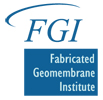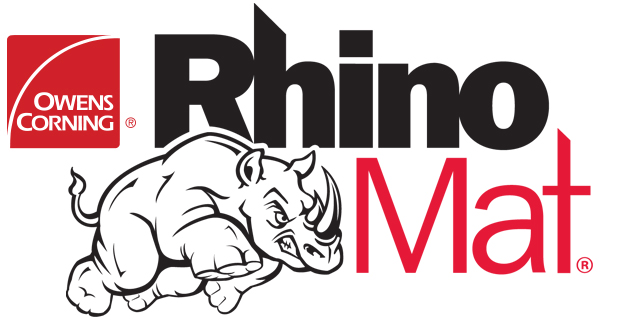Special Sessions recordings are now available

Constructing with Factory Fabricated Geosynthetics Part 1
(Organized by FGI)
Technical Paper Presentations:
70 Ranch Case Study: Interpreting the Data
Matthew Kemnitz, Leak Location Services, Inc.
70 Ranch Raw Water Reservoir – A Geosynthetic Lining System Solution for a Difficult Site
Ronald Frobel, R.K. Frobel & Associates Consulting Engineers; Ray Peebles, Cooley Group
Geomembrane Installation and Testing Cost Estimator
Timothy Stark, Ph.D., P.E., University of Illinois at Urbana-Champaign
Advantages of using International Specs in PVC Geomembranes for Mining
Myriam Acevedo and Juan Cortes, Filmtex S.A.S
Sponsored by: 

Constructing with Factory Fabricated Geosynthetics Part 2
(Organized by FGI)
Technical Paper Presentations:
Renewing the Maerkle Reservoir for the City of Carlsbad with Advanced Floating Cover Technology
Pat Elliott, Raven Engineered Films; Douglas Hilts, Hilts Consulting Group, Inc.
Creating Operational Flexibility with limited Storage Options
Alex Gersch, Layfield Australia
Above Ground Storage: Bucket versus Flat Liners
Ron MacKenzie, Inland Tarp & Liner, LLC
Geomembrane Defect and Wrinkle Leakage Calculator
Timothy Stark, Ph.D., P.E., the University of Illinois at Urbana-Champaign
Sponsored by: 

Constructing with Factory Fabricated Geosynthetics Part 3
(Organized by FGI)
Selecting and Specifying the Appropriate Geomembrane
Moderator: Timothy D. Stark, Ph.D., P.E., University of Illinois at Urbana-Champaign
This Panel Discussion will assemble five (5) industry leaders (3 engineers, 1 geomembrane fabricator, and 1 geosynthetics installer) to discuss the factors that should be considered in selecting and then specifying a geomembrane for a particular application. The moderator, Timothy D. Stark, will present photographs of different applications, e.g., potable water, mining, waste or liquid containment, etc., and ask the panelists to discuss some of the factors that should be considered in the design and specification of the geosynthetics for that application. The audience will be encouraged to submit questions on each application/photograph. The factors that could be considered for each application include: chemical resistance, exposed v. unexposed application, intimate contact, differential settlement, site location, e.g., remote v. accessible, weather, e.g., UV exposure, wind, and temperature, physical properties, e.g., puncture resistance and elongation, static and seismic slope stability, geosynthetic interface shear strengths, construction logistics, e.g., timeframe, vehicle access, and deployment ease, warranty, repairability, and desired color. This should result in a lively debate about designing, selecting, specifying, testing, and installing geomembranes and geosynthetics for a range of applications.
Panelists:
Fabricator: Brian Fraser, Layfield Group, Inc., Edmonton, Alberta
Installer: Patrick Elliott, Raven/CLIConstruction, Inc., Denver, Colorado
Engineer: Douglas Hilts, Hilts Consulting Group, Inc., Los Angeles, CA
Engineer: Joseph Troxell, TetraTech, Columbus, Ohio
Engineer: Jonathan Shamrock, Tonkin + Taylor, Aukland, New Zealand
Sponsored by: 

Current Hot Topics in ASTM International Committee D35 on Geosynthetics (Organized by ASTM)
Subcommittee Chairs for ASTM International’s Committee D35 on Geosynthetics will share current, relevant hot topics being worked on in their groups. Subcommittees include Mechanical Properties, Endurance Properties, Permeability and Filtration, Geosynthetic Clay Liners, Erosion Control, Specifications, Geomembranes and Terminology.
Intro: Gary Torosian, Geocomp
D35.01 – Mechanical Properties: Sam Allen, TRI Environmental
D35.02 – Endurance: Eric Blond, Eric Blond Consultant
D35.03 – Permeability and Filtration: Melissa Medlin, TenCate Geosynthetics
D35.04 – Geosynthetic Clay Liners: Kent von Maubeuge, NAUE
D35.05 – Erosion Control: Rebecca Kurek, Lumite Inc.
D35.06 – Specifications: David Suits, LDS Geosynthetics Consulting Services
D35.10 – Geomembranes: Zahirul Islam, Civil & Environmental Consultants, Inc.
D35.93 – Terminology: Robert Lozano, The Reinforced Earth Company
Geosynthetic-reinforced Bridge Abutments Part 1 – RESEARCH OUTCOMES
Session Chair: Jorge G. Zornberg, Ph.D., University of Texas
This special session (part one of two) is a compilation of the research components of the NCHRP 24-41 report featuring technical paper presentations that include those aspects which led to recommendations for AASHTO modifications
Welcome and Project Overview
Jorge G. Zornberg, Ph.D., University of Texas
Technical Paper Presentations:
Load-carrying GMSE Bridge Abutments: Lessons Learned from Experimental Evaluations
Amr Morsy, Ph.D., Loughborough University
Load-carrying GMSE Bridge Abutments: Lessons Learned from Field Monitoring Evaluations
Burak Tanyu Ph.D., George Mason University; and Fitsum Gebremariam, Ph.D., Arup
Load-carrying GRS Bridge Abutments: Lessons Learned from Numerical Evaluations
Panpan Shen, Ph.D., Tongji University and Jie Han, Ph.D., University of Kansas
Geosynthetic-reinforced Bridge Abutments Part 2 – RECOMMENDATIONS
Session Chairs: Dov Leshchinsky, ADAMA and Barry Christopher, Christopher Consulting
This special session (part two of two) focuses on recommendations for the design of L-C G-R Bridget Abutments.
Short Presentations:
Welcome and Context of the Discussion
Dov Leshchinsky, ADAMA and Barry Christopher, Christopher Constultants
Evidence from FHWA’s GRS-IBS program that supports the adoption of closely spaced reinforcements
Jennifer Nicks, FHWA
General design and construction aspects from FHWA’s GRS-IBS program that apply to L-C G-R Bridge Abutments
Daniel Alzamora, FHWA
NCHRP 24-41 recommended AASHTO Modifications
Jorge G. Zornberg, Ph.D., University of Texas
Q&A Panel Discussion
Moderators: Dov Leshchinsky, Barry Christopher
Panelists: Jennifer Nicks and Daniel Alzamora, FHWA; Jie Han, PhD, University of Kansas; Burak Tanyu, Ph.D, George Mason University; Jorge Zornberg, Ph.D., University of Texas

High-Performance Turf Reinforcement Mats (HP-TRMs)
(Organized by GSI)
George Koerner, GSI, Joel Sprague TRI and Drew Loizeaux, Propex
High Performance Turf Reinforcement mats (HP-TRMs) have taken erosion control with natural vegetation to a whole new level. Reinforced vegetation can now handle many times the velocity and shear stresses of natural turf; sites that were once the sole domain of hard armor are now within the purview of HP-TRMs.
This session will cover HP-TRM testing, properties, specifications and field case histories during the technical session. The speakers will demonstrate the logic of combining engineering ideas and principles for improving the environment through earth-friendly erosion control practice and procedures.
It will include discussions of: Concerns and mechanisms of channel and slope erosion, GS erosion control products currently available in the market, simulated laboratory and field tests for identifying unique product variables for the purpose of documenting field behavior based on cost/benefit performance, credible analytic modeling and design guidance of situations from routine to exotic applications for both channels and slope erosion will be presented along with recommendations and conclusions.
Erosion and its control is a massive (and worthwhile) target application for geosynthetics. Quantification of such HP-TRM enhancement will be discussed. In so doing, geosynthetic applications are compared insofar as their sustainability (i.e. embodied carbon) to the same applications using traditional construction materials. The status of geosynthetics erosion control materials and HP-TRMs will be offered. It is felt that geosynthetics options are indeed viable for many of these extreme applications and will be dependable for very long service lifetimes. As such, geosynthetics provide better and longer performance than traditional materials as well as less costly solutions and thus enhance “relative sustainability.” This takes into account all of the directly applicable material and labor requirements. As will be seen, the traditional civil engineering materials contribute greatly to the embodied carbon of any construction project. By avoiding or minimizing the use of these traditional materials through utilization of geosynthetics, the latter will help to reduce the inherent embodied carbon on projects where erosion control is an issue.

Importance of Drainage, and Role of Geosynthetics, in MSE Structure Performance
(Organized by AMSE)
Drainage is an essential component of every soil structure, including Mechanically Stabilized Earth (MSE) structures. Uncontrolled water flow adjacent to, under or through a reinforced soil mass can impact the structure’s short- and long-term performance. Regardless of the permeability of the reinforced soil, it is poor and risky practice to intentionally – or unintentionally – allow water to flow through MSE structures. Therefore, effective interception, management, and removal of water are critical to achieving the intended MSE structure performance. Design and selection of appropriate drainage features and products is the responsibility of the owner and the geotechnical design team.
Geosynthetic materials such as composites, membranes, and fabrics can direct water away from MSE backfill and facings, reducing infiltration and helping to maintain the as-designed MSE geotechnical and structural properties. Speakers in this Special Session will review essential design concepts related to MSE drainage and present case histories illustrating how several drainage-specific geomaterial products have been used to protect MSE structures from the water around them. Build on your drainage knowledge and learn about geomaterial drainage products in this Special Session.
MSE Structure Drainage – Critical to Success
Robert Gladstone
MSE SRW Drainage Systems in Water Applications – Case Study of 1992 Army Corps Flood Control Project
Karen Nelson
Geocell MSE Earth Retention in Drainage Applications
Bryan Wedin
Use of Geosynthetic and Natural Materials Combined with MSE Technology to Raise a Dam
Robert Johnson
External Drainage to MSE Structures: Combining the Benefits of Concrete and Geosynthetics in GCCMs
Lee Church
Case Studies of MSE Panel Walls in Hydraulic Applications
Keith Brabant
 TEXTILES.ORG
TEXTILES.ORG


